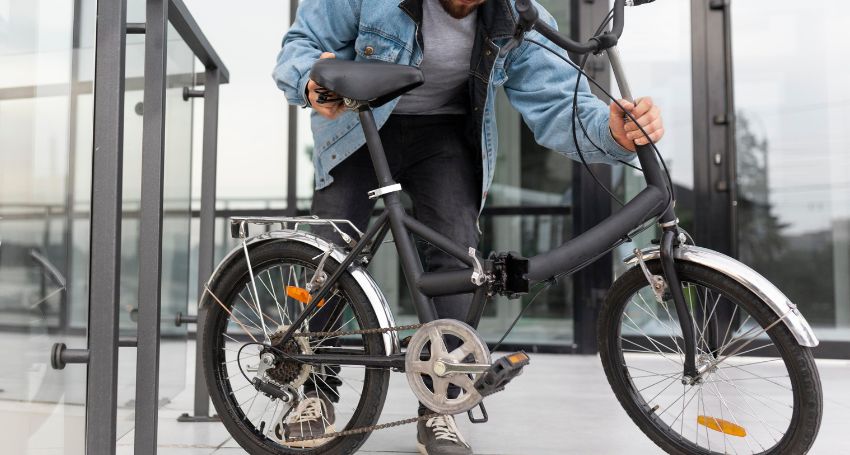
Micromobility is revolutionizing the way people travel, particularly in urban areas. From electric scooters to e-bikes and shared mobility systems, this rapidly growing mode of transportation is closely aligned with sustainable development goals. Understanding the benefits of micro mobility is essential for cities aiming to reduce emissions, ease congestion, and create more livable urban environments. This article is worth reading because it explores the intersection between micromobility and sustainability in-depth, focusing on the benefits of micro mobility, key policy options, and how shared micromobility programs are shaping sustainable cities.
What Is Micromobility and Why Does It Matter for Sustainability?
The definition of micromobility typically includes small, lightweight vehicles like scooters, bicycles, e-bikes, and electric scooters. These micromobility devices are designed for short trips in urban environments and offer a flexible alternative to traditional transport modes. Since micromobility involves vehicles that are typically low-emission or zero-emission, they represent a major opportunity to promote sustainable mobility.
Micromobility is used in many cities as a primary or supplementary means of transport. As urban areas face increasing traffic congestion and pollution, micro-mobility systems are emerging as essential components of a modern, sustainable transportation system. The combination of low environmental impact and high accessibility makes micromobility a powerful tool in promoting sustainability.
How Can Micromobility Help?
Micromobility can help address several United Nations sustainable development goals (SDGs), especially those focused on climate action, health, and sustainable cities. One major advantage of using micromobility is its ability to replace short car trips, thereby reducing carbon emissions and improving air quality.
By offering a practical and scalable mobility service, micromobility supports access to mobility for all. It also plays a role in building sustainable cities by improving the efficiency of the transportation system and decreasing reliance on high-emission vehicles. Encouraging the use of micromobility options contributes to the sustainable transport systems envisioned in the SDGs.
Read more: What Is a Plug-In Hybrid? Understanding This Game-Changing Vehicle
Benefits of Micromobility
The benefits of micro mobility are diverse and impactful. One significant advantage is reducing traffic congestion by replacing cars with lightweight vehicles for short trips. This can free up parking space and improve overall mobility in crowded urban areas.
Additionally, micromobility modes such as e-scooters and e-bikes contribute to active mobility, which improves public health. These micromobility solutions also lower emissions and fuel consumption, supporting the broader goal of sustainable mobility. Shared micromobility further reduces costs and makes transportation more accessible across diverse communities.
Which Micromobility Vehicles Are Most Commonly Used?
Micromobility vehicles come in various forms, including kick scooters, e-scooters, bicycles, e-bikes, and even electric scooters and electric bicycles. These small vehicles are ideal for short commutes and are popular because they can easily navigate dense city environments.
Bicycle and e-bike use continues to grow, particularly in European cities, where investment in bike lanes and infrastructure supports their integration into the transport system. The number of vehicles in shared bike and scooter fleets has increased significantly, making micromobility more visible and available to users.
Read more: The Critical Role of a Battery Management System (BMS) in Electric Vehicles
How Does Shared Micromobility Help?
Shared micromobility programs are an essential aspect of modern mobility services. These systems enable users to rent bikes or scooters on demand, reducing the need for vehicle ownership. Shared micromobility also promotes sustainable transportation by encouraging short, emission-free trips.
By integrating micromobility within urban mobility networks, cities can optimize the use of public space, reduce congestion, and limit the environmental footprint of transport modes. Shared bike and scooter fleets offer a cost-effective and environmentally friendly alternative to private vehicles, aligning well with sustainability goals.
Why Are Cities Around the World Encouraging the Use of Micromobility?
Cities across the globe are encouraging the use of micromobility due to its environmental, social, and economic benefits. Many cities are integrating micromobility into their transport systems to reduce emissions and promote cleaner means of transport.
Cities around the world are redesigning urban transport strategies to include infrastructure such as bike lanes and scooter parking. These improvements facilitate safe and efficient micromobility usage and help shape smart cities that prioritize sustainable mobility.
What Role Does Policy Play in Promoting Micromobility?
Policy options are critical in shaping the future of the micromobility industry. Government regulation can support the safe operation of micromobility systems while ensuring alignment with urban planning goals. Policies that promote shared micromobility programs can help cities meet their sustainability targets.
The International Transport Forum and other policy-making bodies have highlighted the need for guidelines to govern shared mobility and electric micromobility. Proper regulation ensures that micromobility services complement public transport and do not contribute to congestion or safety issues.
How Is Micromobility Used in Combination With Public Transport?
Micromobility and public transit are increasingly used together to form efficient, multimodal transport systems. In many cities, micromobility vehicles like e-scooters and e-bikes serve as last-mile solutions that connect users to public transport hubs.
This combination with public transport allows users to complete trips that are both time-efficient and environmentally friendly. By reducing dependence on cars, these integrated systems improve the overall sustainability of the transportation network.
Read more: How Cold Weather Can Cut Electric Vehicle Range and Make Charging Tough
Challenges for the Micromobility Sector
While the micromobility sector offers enormous potential, it also faces several challenges. These include regulatory uncertainty, infrastructure limitations, and concerns about safety and fleet management. The use of e-scooter riders on sidewalks, for example, has raised questions about proper usage and urban design.
However, the sector also presents unique opportunities to innovate. Advancements in electric micromobility, combined with growing public interest in sustainable transportation, can help overcome these obstacles. The right combination of technology, policy, and community engagement will determine the future success of the micromobility industry.
How Is Micromobility Shaping the Future?
Micromobility is redefining urban transport by offering efficient, accessible, and sustainable alternatives to traditional modes. With increasing micromobility usage, cities are reimagining their transport systems to include diverse forms of mobility that serve both environmental and social goals.
As cities become more focused on sustainable development, integrating micromobility will be essential to building urban systems that are resilient, inclusive, and low-emission. From lightweight vehicles to shared mobility services, micromobility is playing a central role in shaping sustainable cities.
Conclusion
The benefits of micro mobility are increasingly evident as cities adapt to growing sustainability demands and changing transportation needs. By offering low-emission, flexible, and efficient transport options, micromobility is becoming a cornerstone of urban mobility. From reducing traffic congestion to supporting active lifestyles and meeting sustainable development goals, micromobility presents a transformative opportunity. As more cities embrace micromobility within their broader transport systems, the path toward cleaner, more equitable, and more efficient urban transport becomes clearer.



